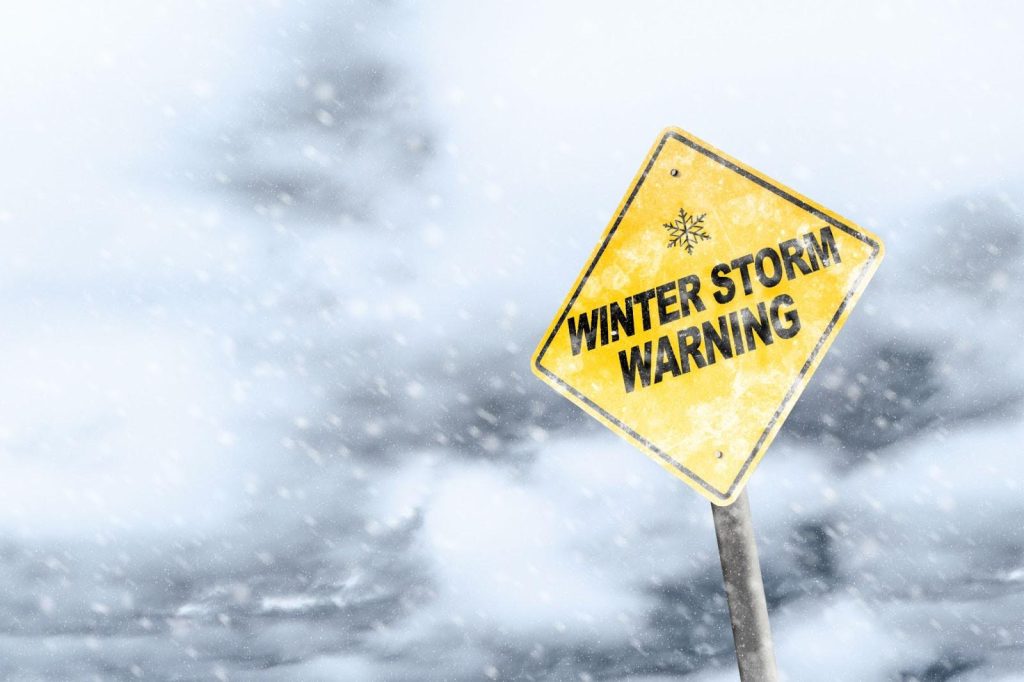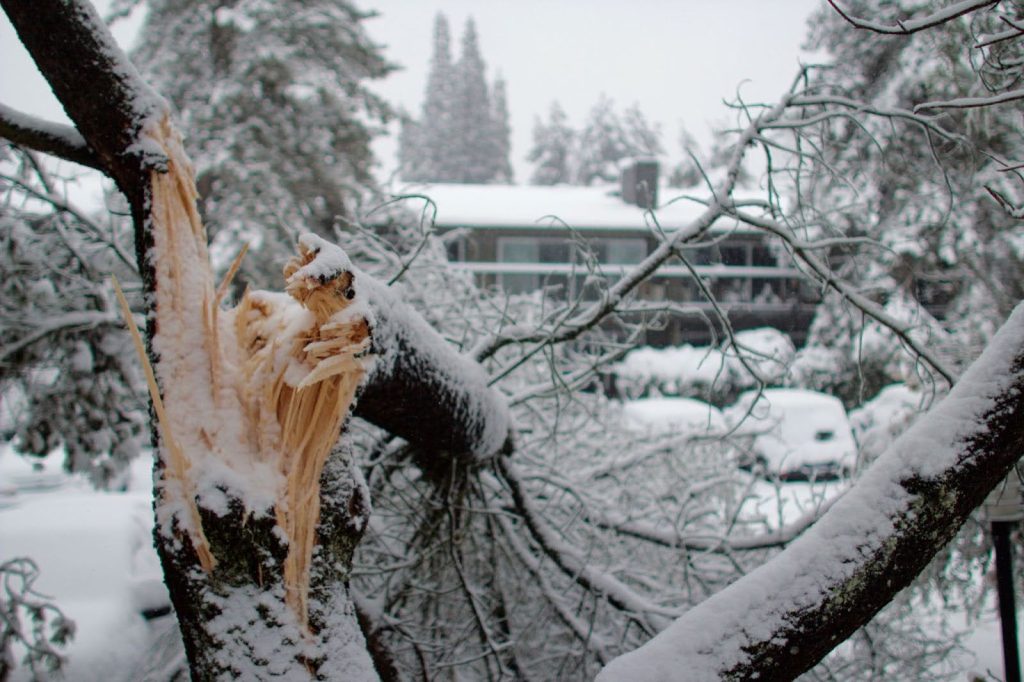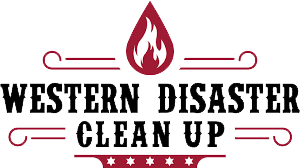After a winter storm, the aftermath often brings freezing temperatures, piles of snow, and the potential for flooding. Whether it’s due to melting snow, ice dams, or heavy rainfall, floodwaters wreak havoc on your home and property. That’s why understanding the importance of flood clean-up after a winter storm is crucial for safeguarding your well-being, property, and financial security.
From ensuring safety during the flood clean-up process to making necessary repairs and preventing future floods, we’ve got you covered. Let’s dive in and explore the key measures you need to take after a winter storm-induced flood.

Safety first
In the aftermath of a winter storm-induced flood, your safety should be your top priority during the clean-up process. Here are key steps to ensure safety:
- Carefully evaluate the situation before entering your flooded property. Check water depth and watch for immediate hazards like live wires, gas leaks, or structural damage. Don’t go in if conditions are unsafe.
- If it’s safe to, turn off your electricity, gas, and water to prevent further hazards. If you’re unsure, contact your utility companies for guidance. If you suspect electrical hazards or gas leaks, leave and seek professional help. Check for structural damage that may require assessment by an engineer.
- Always wear protective gear, including gloves, boots, goggles, and a mask when entering flooded areas to minimize exposure to contaminants.
Assessing the damage
Start by conducting a systematic inspection of your property, meticulously examining each room. Make note of areas and items impacted by the flood, paying particular attention to the condition of flooring, walls, ceilings, and personal belongings.
Additionally, employ moisture detection tools like moisture meters and thermal imaging cameras to gauge the extent of dampness in affected regions, including concealed moisture that could lead to mold growth if not addressed.
To further streamline the clean-up process, categorize the damage into three levels: minor, moderate, and severe, aiding in the decision of whether professional assistance is necessary.
Capture clear, high-resolution photographs or videos showcasing the extent of water intrusion, any structural harm, and the condition of your personal possessions. These visual records serve as invaluable evidence for your claims.
Generate meticulous inventory lists of the affected items, specifying their approximate value and age. Include any relevant receipts and supporting documentation to bolster your claims. Organizing this information effectively will streamline the insurance process, ensuring a smoother and more efficient resolution.
During flood clean-up, it’s crucial to identify and address any potential structural issues in your home. Begin by conducting a thorough evaluation of your property’s structural integrity. This involves inspecting for signs of damage, such as wall cracks, foundation issues, or weakened support beams.
If you suspect any structural problems, it’s advisable to seek professional guidance from a structural engineer or contractor who can provide a thorough assessment.
Additionally, pay close attention to your home’s foundation. Flooding can introduce excessive moisture, which, if not promptly addressed, can weaken foundations over time. Addressing foundational concerns in a timely manner is essential to prevent potentially costly repairs down the line.
Water removal
When it comes to removing standing water, selecting the right equipment is essential. Submersible pumps, wet/dry vacuums, and sump pumps are commonly used for this purpose. If you’re unsure which equipment is suitable for your situation, we recommend asking a professional.
Begin the water removal process at the source of the flooding and work your way outward. This approach prevents further water migration and potential damage. Thoroughness is key in water extraction, as even small amounts of residual moisture can lead to mold growth and structural damage over time.
Use dehumidifiers to reduce humidity levels in the affected areas. Additionally, increase ventilation by using fans and opening windows, weather permitting. This helps expedite the drying process and ensures that moisture levels return to normal as quickly as possible.
Moisture meters are a great tool to monitor the moisture levels in areas and materials that have experienced water damage. You don’t want to proceed with the rest of the reconstruction and restoration processes until the moisture levels reach at least 50% or lower.
Cleaning and sanitizing
Begin the cleaning process from the highest point in the affected area and work your way down. This helps prevent contamination from higher surfaces. Utilize shovels, buckets, brooms, and hoses to efficiently remove mud and debris.
Understanding the distinction between cleaning and sanitizing is crucial. Cleaning focuses on removing dirt and debris, while sanitizing is about killing germs and bacteria. Use the appropriate cleaning agents and disinfectants for each task.
When dealing with hard surfaces like countertops, floors, and walls, ensure that you clean and sanitize them thoroughly. Choose a disinfectant effective against the bacteria and viruses commonly found in floodwaters.
For soft materials such as upholstered furniture, carpets, and bedding, consider professional cleaning or replacement, as these items may be challenging to salvage effectively.
By diligently cleaning and sanitizing your property, you will remove contaminants and create a healthier living environment for you and your family. Following these steps ensures that your home is on the path to recovery after a winter storm-induced flood.
Salvaging belongings
The next critical step after a winter storm-induced flood is to salvage your belongings. This part is often challenging, both emotionally and physically. Begin by prioritizing your belongings based on their sentimental or monetary value.
Focus on items that hold the most value or are irreplaceable, placing them as a top priority. Act swiftly because time is of the essence. The longer you wait, the greater the risk of mold growth and irreversible damage to your items.
Certain valuables, such as antiques, artwork, and electronics, may necessitate the expertise of professional restoration services. Consult specialists in these respective fields to ensure the best chance of salvaging these items.
Handle irreparably damaged items with care, as they may pose safety risks. Utilize appropriate protective gear when necessary and adhere to local regulations for disposing of such items, including utilizing designated disposal sites. Keep detailed records of items you must dispose of for insurance purposes.
While the process of salvaging belongings can be emotionally challenging, it is a vital part of the recovery journey. By thoughtfully prioritizing, cleaning, and restoring valuable possessions and responsibly disposing of irreparably damaged items, you can minimize your losses and preserve what matters most to you.
Mold prevention and remediation
Preventing and addressing mold growth is a critical concern in the aftermath of a winter storm-induced flood, as it significantly impacts the safety and health of your home environment. Look out for visible signs of mold growth, which can manifest as discoloration, a musty odor, or visible mold patches.
Ensure you inspect hidden areas like behind walls, under flooring, and within ductwork, as mold can thrive in concealed spaces. If you suspect extensive mold growth or are uncertain about the problem’s scope, consider seeking a professional mold inspection.
To prevent mold, prioritize effective ventilation within your home to reduce humidity levels. Employ exhaust fans, dehumidifiers, and open windows when possible. Promptly address any leaks or water intrusion, no matter how minor, as these can lead to mold growth over time. Seal cracks and gaps in your home’s foundation, walls, and roof to prevent water from seeping in.
For smaller, accessible areas of mold growth, DIY remediation is an option, but it’s essential to proceed with caution, adhere to safety guidelines, and use appropriate PPE.
After you have successfully removed all the mold and mildew, it’s just as important to implement preventive measures to deter mold from returning. This includes resolving ongoing water issues, maintaining proper ventilation, and monitoring for any signs of new growth.
Repairs and restoration
In cases of severe structural damage, especially if you’re unsure of the extent, it’s advisable to consult a structural engineer or contractor who can provide a comprehensive evaluation and guidance on the necessary repairs. Look for weakened foundations, damaged walls, and compromised structural elements.
It’s vital to promptly address foundational issues since they could significantly impact your home’s stability, potentially requiring actions such as foundation leveling, crack sealing, or underpinning.
Depending on the type of flooring in your home, you may need to repair or replace it. The carpeting may necessitate removal and replacement, while hardwood or laminate floors might require refinishing.
Additionally, repair or replace damaged drywall and repaint affected areas. Prioritize proper drying and disinfection before commencing any restoration work.
Floodwaters can also harm HVAC components and ductwork, potentially leading to health hazards if not addressed. Consider duct cleaning to remove contaminants or mold that may have entered your HVAC system, ensuring healthy indoor air quality.
Implementing regular maintenance and preventive measures can further reduce the risk of future flooding issues, contributing to the long-term well-being of your property.
Working with professionals
Choosing the right restoration company is crucial. Seek out a company with the necessary credentials, licensing, and insurance to ensure they meet industry standards and can effectively handle your project. Investigate their reputation through online reviews, references, and recommendations from trusted sources.
In addition to engaging restoration professionals, you’ll want to collaborate with insurance adjusters and contractors. If you have flood insurance, promptly notify your insurance company and work closely with your adjuster to document the damage through photos, videos, and detailed records. This expedites the insurance claim process.
Coordination among various contractors involved in your restoration project ensures seamless progress. Establish a detailed scope of work with your chosen restoration company, outlining tasks, timelines, and costs, serving as an important reference point for all parties involved.
It’s a collaborative effort that leverages their expertise to meet your needs and preferences, ultimately yielding the best possible results.

Western Disaster Clean Up handles winter storm and flood damage quickly and effectively
If you’ve recently experienced a flood or other disaster, it’s essential to act quickly to prevent further damage to your property and ensure a faster recovery.
Western Disaster Clean Up is a team of experienced restoration professionals who can help you with your flood restoration and cleanup needs. Our experts offer fast, efficient, and reliable services to help you and your loved ones return to normal as soon as possible.
For swift and reliable flood restoration, call Western Disaster Clean Up at 385-381-6321.

